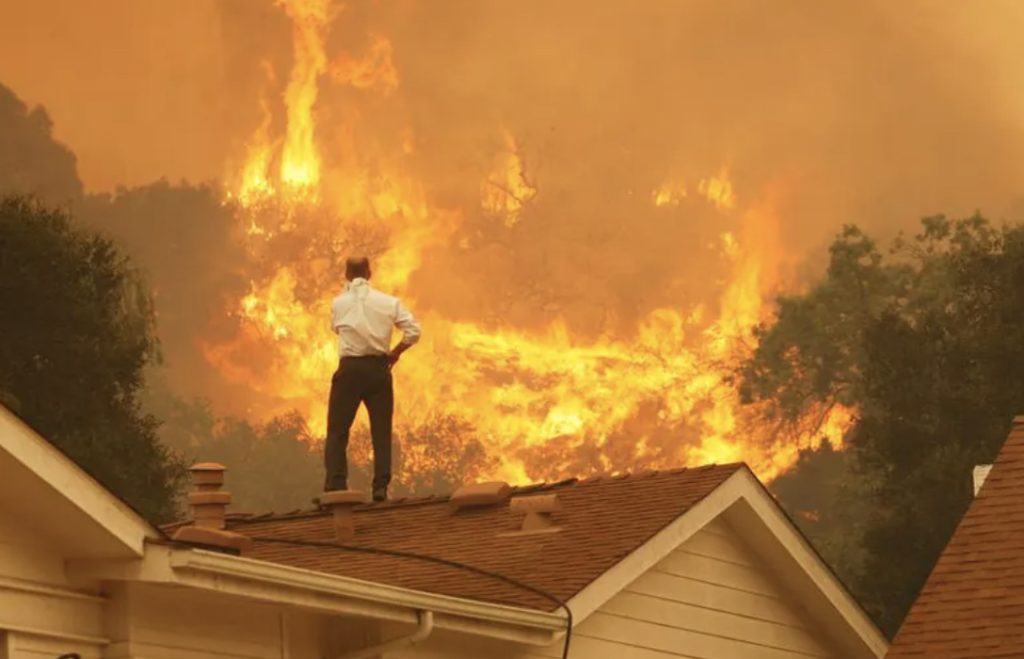
Look out below! There’s been a seismic shift in California, and Rancho Santa Fe is at its epicenter. The earthquake isn’t just under our feet. It’s all around our homes. Our lush landscape brings with it very real fire risk, as we learned during the Witch Fire in 2007, and now, according to State Farm and other insurers, our homes are virtually uninsurable.
Since late 2022, seven of the 12 largest home insurance companies in California have either completely paused or greatly limited new home insurance applications. In 2022, State Farm, which is California’s largest home insurer and one of the largest insurers in the country, had more than 21% of the market and incurred $5.9 billion in losses. State Farm had already decided in 2023 to stop offering any new home policies in California.
Last month, State Farm announced they are not renewing 72,000 California policies, including policies for 30,000 homes, 7,000 of which are in San Diego. In a recent state filing, State Farm revealed that of the 1,260 homes they currently insure in zip code 92067, they are not renewing 643. In 92091, of the 161 homes they insure, they are not renewing 70.
The non-renewals begin July 3 for homeowners, rental dwelling, residential community association and business owners policies and on August 20, for commercial apartment policies. This means if your policy’s renewal date occurs before those dates, your policy should be safe – for this renewal period at least.
Some of the factors contributing to insurers pulling out of California:
- Wildfires of increasing frequency and severity due to climate change, prolonged drought and urban sprawl into wildland areas;
- Urban interface (where residential areas border wildland areas prone to wildfires);
- Mudslides and debris flows exacerbated by wildfires;
- Earthquake risk;
- Stricter building codes increase the cost of rebuilding;
- Increasing labor and material costs;
- Higher litigation and legal costs of defending lawsuits and settling claims.
State Farm did cite mounting losses and the escalating costs of claims for its decision. However, State Farm’s non renewals are happening despite California approving the company’s requests to levy double-digit premium increases in 2023.
Another possible reason is California’s Proposition 103, enacted in 1988, which allows the state insurance commissioner to reject proposed rate increases and order refunds. And in 2022, California passed regulations to force insurers to give premium discounts for property owners who made improvements to reduce their fire risk. But the regulation also allowed insurers to drop homeowners’ insurance entirely if they deemed their property too risky. Could insurers be pulling out of the state as a response to these regulations or to gain leverage to pressure California to regulate them less?
How can you assess your risk to an insurer or contest their decision to drop your coverage?
There is often no transparency about insurers decisions to non-renew, nor is there an opportunity to appeal. The insurer may not even have inspected your property in person; more commonly now, they use aerial imagery analyzed with AI to assess risk.
One risk assessment tool you can look at to assess your own risk is https://riskfactor.com/property. Enter an address to see fire, flood, wind, heat and other risk factors that may be taken into account by insurers. According to Risk Factor, there are 1,370 properties in Rancho Santa Fe that have some risk of being affected by wildfire over the next 30 years. This represents 88% of all properties in Rancho Santa Fe.
With home insurance being virtually impossible to obtain anymore, and any house with a mortgage being required by the lender to have this coverage, many California homeowners have had to turn to the higher cost California FAIR (Fair Access to Insurance Requirements) Plan as a last resort. FAIR is an insurance program established to provide basic property insurance coverage to homeowners who are unable to obtain insurance through the private market due to high-risk factors such as location in areas prone to natural disasters like wildfires or earthquakes.
However, FAIR caps coverage at $3 million (as of 2020) combined for the dwelling and personal property. Thanks to RSF Post contributor RSFPoster for pointing out that the mix of dwelling and contents can be divided unevenly, i.e. $2M for dwelling and $1M for contents, so presumably FAIR can give up to $3M in dwelling coverage.
That $3M limit still will leave many residences in Rancho Santa Fe under-insured for fire. Considering the median listed and sold home prices in 92067 was quoted in February at $7.8 million and $4 million respectively, FAIR insurance is often inadequate protection for homeowners’ coverage. In addition, FAIR focuses on fire damage, so you’ll have to purchase a separate “wraparound” policy to get more complete coverage.
Insurance agents are recommending that you not wait for a non-renewal letter. Contact an insurance broker immediately to start shopping around for replacement insurance. If you are lucky enough to get offered new insurance, you best take it immediately, because it may not be available tomorrow.
Ellen Stiefler is a Covenant member.
Updated 4/17/24